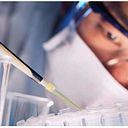Since reactive distillation was initially used on a broad scale to produce methyl acetate in the middle of the 1980s, interest in this integrated process has skyrocketed. This interest, both academic and industrial, has resulted in the production of numerous new bulk compounds using this process today. Among them are the gasoline ethers, of which MTBE (methyl-tert-butyl ether) is the most well-known and has the largest production volume installed globally.
This is due to its usage as an anti-knock gasoline additive, which has allowed it to be a substitute for (lead) compounds in gasoline. However, as MTBE is non-degradable in groundwater, and the primary way of disposing of MTBE is into the environment, its use has been prohibited in several areas of the world today.
Because the MTBE manufacturing processes and methyl acetate have been thoroughly explored and are well understood today, a novel reaction system is a common choice among academics and industries. The reaction system was chosen for its commercial appeal as well as an added aspect other than the unique reaction and distillation behavior. This aspect is called liquid-liquid phase splitting.
The Process Idea
Most of the systems commonly employed in the reactive distillation literature do not have significant regions where phase splitting occurs. In fact, a large majority do not display phase splitting at all.
If liquid phase splitting is chosen as a focus, the system under consideration should have a big phase splitting area. This ensures that the final column designs have at least certain sections where phase splitting happens.
Hence, the acid-catalyzed cyclohexanol synthesis from cyclohexene and water was chosen:
Cyclohexene + Water (H) = Cyclohexanol
The economic interest in this process stems from the fact that cyclohexanol is employed in nylon polymerization, as it may be oxidized to cyclohexanone and subsequently to adipic acid or e-caprolactam. Partial oxidation of cyclohexane to cyclohexene then produces cyclohexanol/cyclohexanone compounds.
However, there are some downsides to this procedure.
A Better Way?
Others have already proposed replacing the standard procedure with the cyclohexene hydration technique because it appears highly appealing. Asahi Chemical, in particular, has developed many factories based on this process. Their method employs a slurry reactor containing the two reactants and substantial volumes of a very small-grained HZSM5-type zeolite catalyst.
A settler separates the two liquid phases after the slurry reactor does its job. The catalyst only appears in the aqueous phase and is then recycled back into the reactor. The organic phase is distilled to separate the cyclohexanol product from the unreacted cyclohexene.
Because of the poor equilibrium conversion to cyclohexanol (approximately 14%), the majority of the organic stream is recycled back into the reactor. Another issue with the Asahi method is that the partial hydrogenation of benzene to cyclohexene, also invented by Asahi Chemical, can never be totally selective at full conversion.
Significant quantities of cyclohexane CAS 110–83–8 and benzene are present in the cyclohexene feed and are difficult to separate from the cyclohexene because of the tiny variances in boiling points. To avoid an excessive accumulation of inerts in the organic phase, a specific organic phase amount must be eliminated from the plant, resulting in cyclohexene losses.
Conclusion
Metadynea, an Austrian-based cyclohexene manufacturer, produces its cyclohexene supported by catalyst usage and works at the point of highest selectivity. Belonging to the Metafrax Group, Metadynea is also a cyclohexene supplier. With our technology, your processes and products are made better. Contact us today to get your pure cyclohexene.
